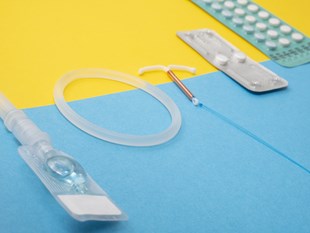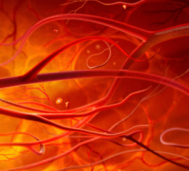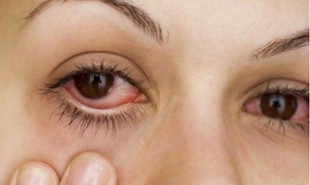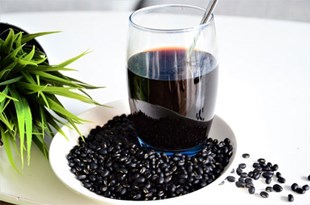Vascular diseases including atherosclerosis, stroke, and peripheral artery disease present a major challenge to the medical industry with their potentially debilitating physical and psychological repercussions. While diligent attention to lifestyle habits is essential in mitigating one's risk of developing these conditions, many are unaware of the hereditary components that can compound such risks. Genetics, indeed, has a noteworthy part to play in determining individual susceptibility to vascular disorders, making it all the more crucial for us to be aware of our ancestral history in order to safeguard our health.
1. Genetic Variations and Vascular Disease
The intricate correlation between genetics and environmental factors in the development of vascular diseases is becoming increasingly clear. Numerous genetic variants have been identified that are associated with an elevated risk of developing such ailments, prompting scientists to further explore how inherited patterns can shape individual susceptibility. As we delve deeper into the compelling nexus that connects our genes and our wellness, we gain invaluable insight into the most effective methods of prevention and treatment.
2. Familial Hypercholesterolemia (FH):
Familial hypercholesterolemia is a genetic disorder that results in high levels of LDL cholesterol in the blood. High LDL cholesterol is a known risk factor for atherosclerosis, which is the narrowing and hardening of arteries. Individuals with FH inherit mutated genes that prevent the removal of LDL cholesterol from their bloodstream effectively.
3. Polycystic Kidney Disease (PKD):
Polycystic Kidney Disease (PKD) is a genetic condition that presents a heightened risk of vascular diseases. Those with the disease are more likely to struggle with hypertension, placing relentless pressure on their blood vessels and straining them to their limits. This, in turn, can lead to aneurysms and other complications, highlighting the importance of being well-informed to help manage this condition. By understanding the potential risks associated with PKD and working to maintain healthy blood pressure, individuals can go a long way toward promoting a healthier vascular system.
4. Factor V Leiden Mutation:
The Factor V Leiden mutation is a genetic modification that can significantly heighten the risk of developing abnormal clots in the blood. These clotting disturbances can be dangerously detrimental, obstructing crucial artery or vein pathways and potentially inciting life-threatening conditions such as heart attacks, strokes, or deep vein thrombosis. It is therefore essential for individuals to remain well informed of this hazardous mutation and take proactive measures to prevent its occurrence.
5. Marfan Syndrome:
Marfan Syndrome is a genetic disorder that disrupts the collagen in connective tissue, including blood vessel walls. While this can lead to a wide array of physical symptoms most notably exceeding height and long extremities it also increases the risk of life-threatening aneurysms, particularly within the aorta, the body's largest artery. Left unremediated, this condition could leave those affected dangerously vulnerable to cardiac complications and ruptures. Therefore, early diagnosis and tailored treatment plans are essential for the long-term health of individuals with Marfan syndrome.
Genetic Testing and Risk Assessment
The power of genetics to shape an individual's susceptibility to vascular diseases is becoming increasingly clear. As such, genetic testing has become a cornerstone of preventive healthcare. By analyzing specific variations or mutations in an individual's genome, these tests are able to accurately gauge one's risk factor for multiple conditions and arm them with the knowledge to take preventative action. In other words, they enable people to make informed decisions about their health which is a key step towards achieving true wellness.
Personalized Prevention Strategies
Arm yourself with the understanding of your genetic likelihoods and take control of your health. A perfect example is Familial Hypercholesterolemia (FH), a condition associated with an elevated cholesterol level due to genetic mutation. For those found to be highly at risk of FH, yield to the power of preventive measures such as a cholesterol-lowering medication regimen and nutritious lifestyle choices. Likewise, individuals predisposed to blood clotting-related illnesses can safeguard their well-being through anticoagulant medications prescribed by medical professionals. Educate yourself on the risk factors you are susceptible to and make proactive decisions rooted in knowledge.
In conclusion, as we've explored the intricate relationship between genetics and vascular diseases, it becomes evident that genetic predispositions can significantly impact one's risk. By understanding these genetic factors, individuals can take proactive steps to tailor their restless legs treatment according to their unique genetic profile. Genetic testing not only helps in assessing vascular disease risk but also plays a crucial role in guiding personalized approaches to restless legs treatment. This holistic approach, taking genetics into account, can lead to more effective and targeted interventions for better overall health.
So, when it comes to preventing vascular diseases and maintaining overall health, remember that it's not just about your choices today but also the genes you inherit. Start with understanding your genetics, and together with lifestyle modifications, you can stay ahead in the race to beat vascular diseases.













